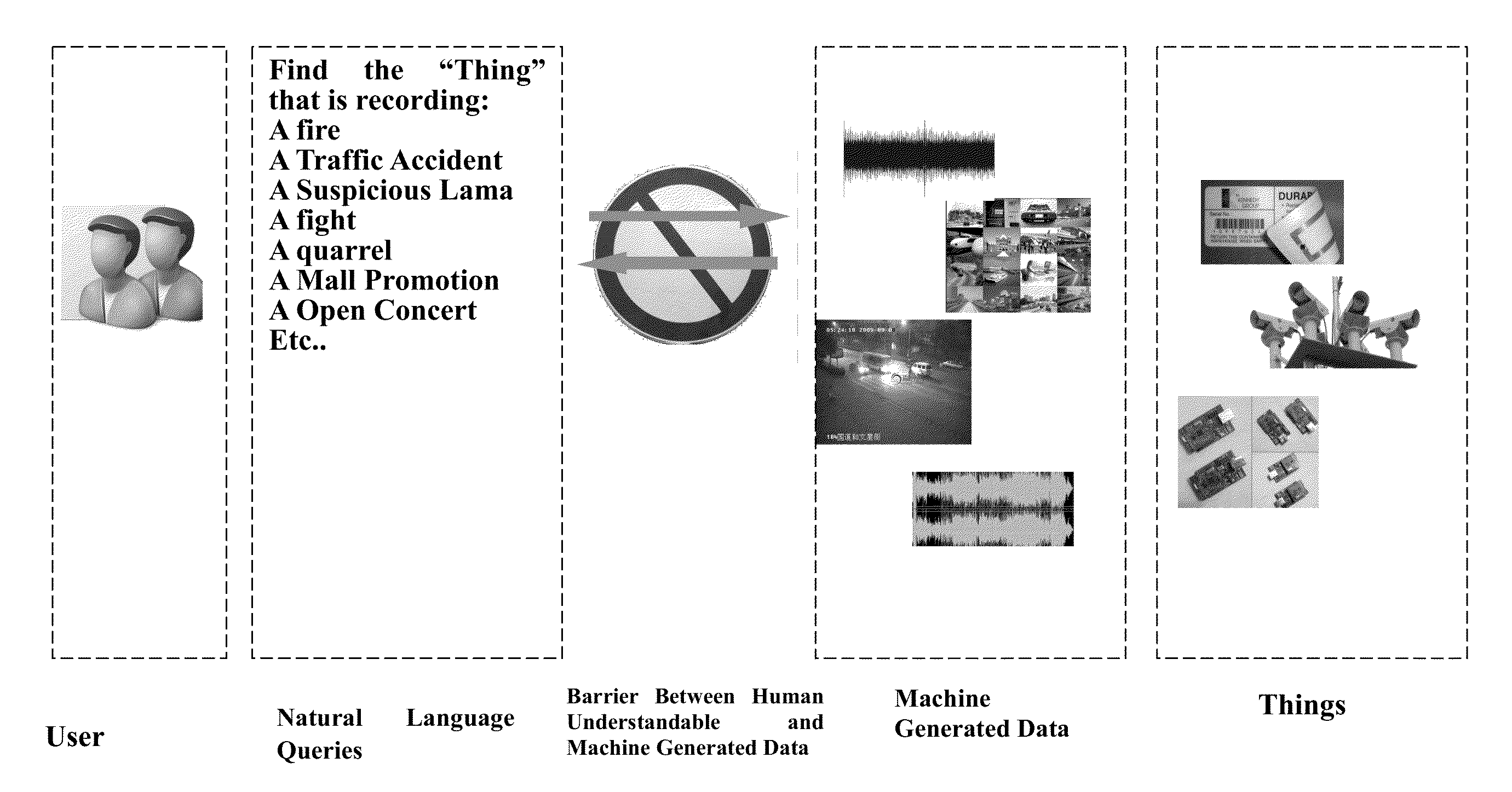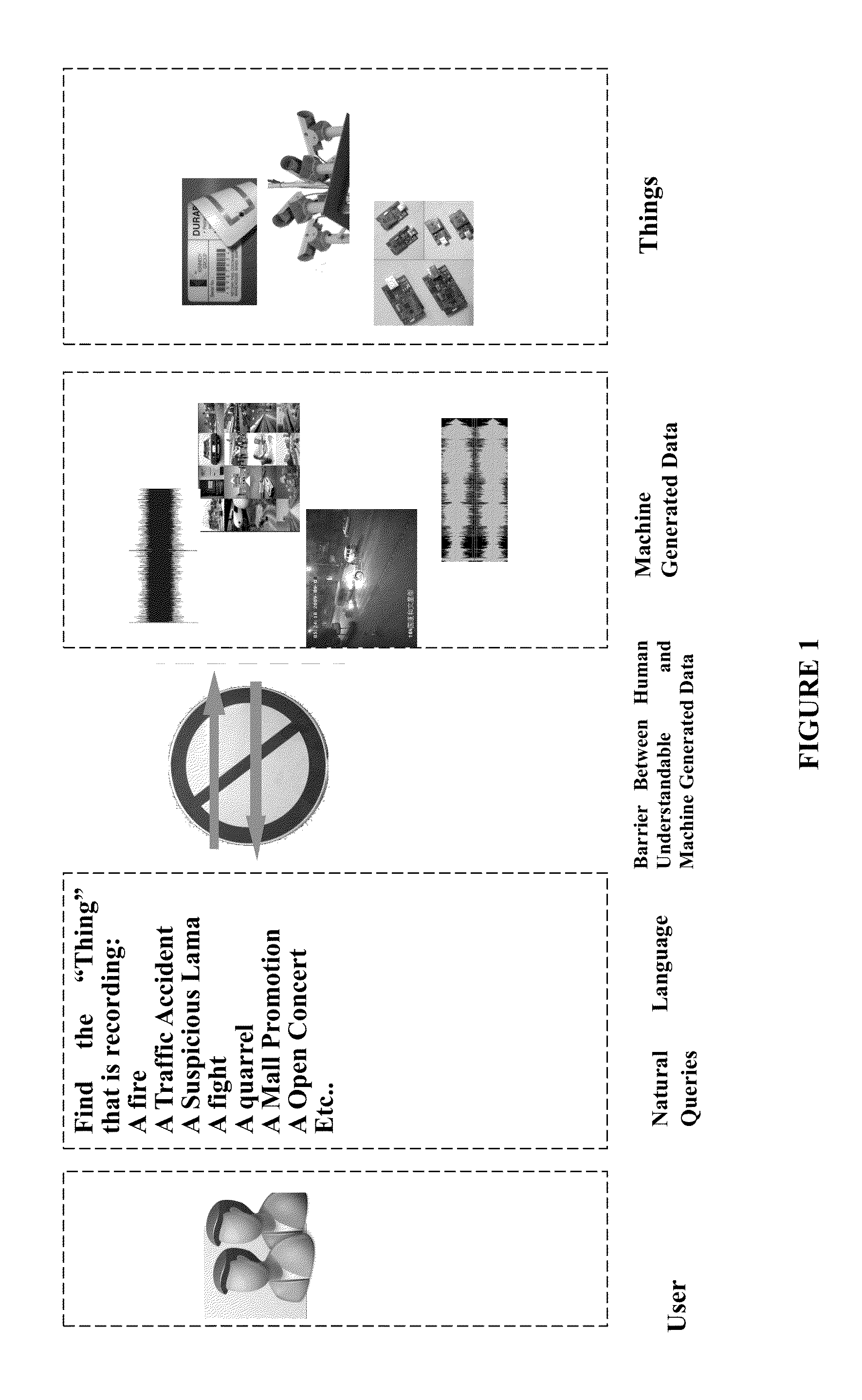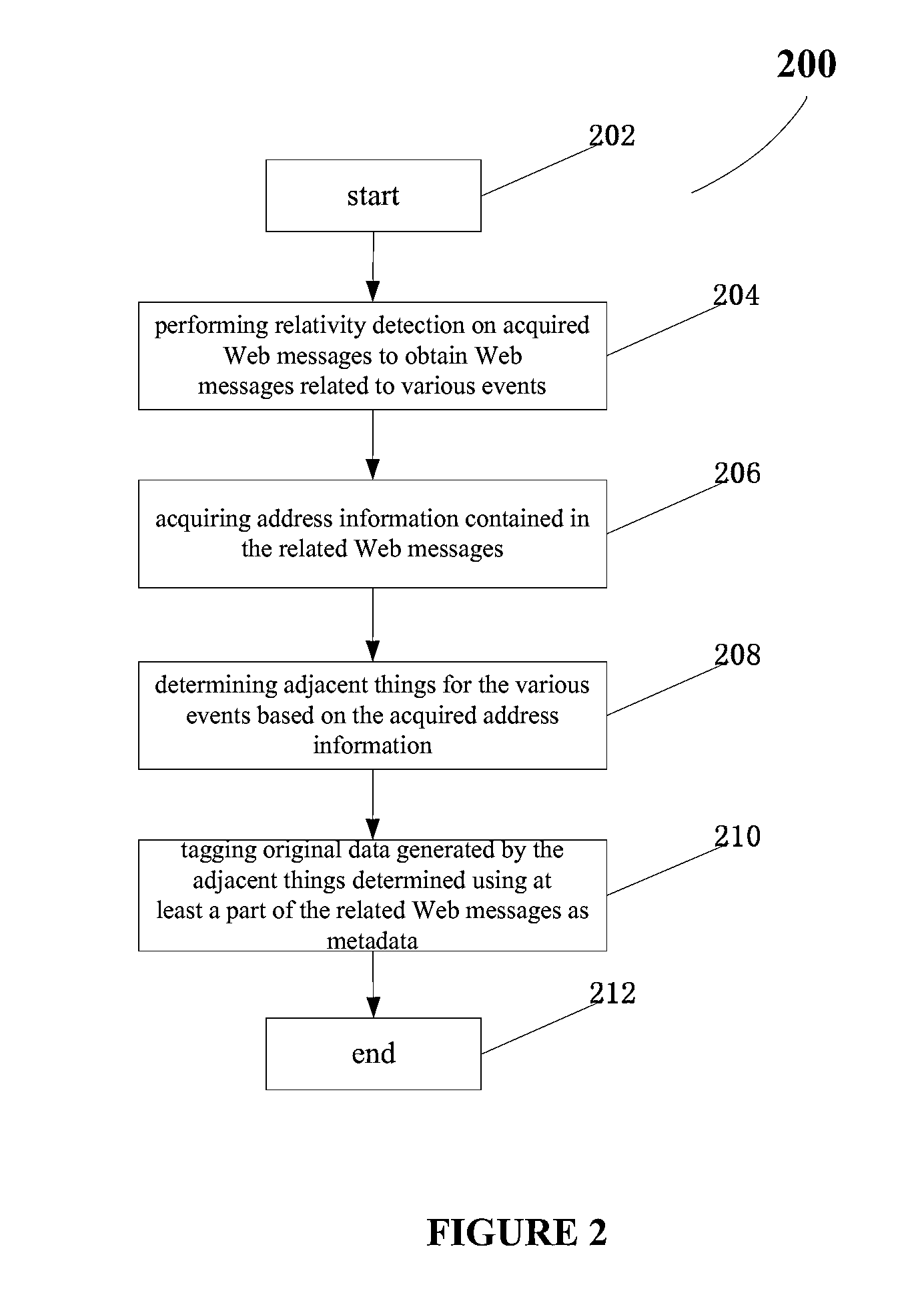Method and system for tagging original data generated by things in the internet of things
a technology of internet of things and original data, applied in the field of data processing techniques, can solve the problems of huge data scale, difficult to convey human opinions and sentiments, and difficulty in finding sensors that have recorded information related to the even
- Summary
- Abstract
- Description
- Claims
- Application Information
AI Technical Summary
Benefits of technology
Problems solved by technology
Method used
Image
Examples
Embodiment Construction
[0021]The present invention addresses at least one of above problems identified in the prior art. According to one aspect of one embodiment of the present invention, a technical scheme is provided for tagging original data through the utilization of Web messages in order to provide original data with metadata for their semantic descriptions, so as to facilitate the understanding of contents of the original data.
[0022]Web messages such as blogs and microblogs have been prevalently used in practice. The term “Web messages” used herein refers to those contents having universality and relativity and delivered over networks. The so-called “universality” means that those Web messages have a great variety of contents, involving various events, human mind, etc occurred in the real world, and posted by users over the Internet at any moment using various devices, such as mobile terminals or fixed terminals. Web messages include texts, documents, icons, photos, audios, videos, etc. The so-call...
PUM
 Login to View More
Login to View More Abstract
Description
Claims
Application Information
 Login to View More
Login to View More - R&D
- Intellectual Property
- Life Sciences
- Materials
- Tech Scout
- Unparalleled Data Quality
- Higher Quality Content
- 60% Fewer Hallucinations
Browse by: Latest US Patents, China's latest patents, Technical Efficacy Thesaurus, Application Domain, Technology Topic, Popular Technical Reports.
© 2025 PatSnap. All rights reserved.Legal|Privacy policy|Modern Slavery Act Transparency Statement|Sitemap|About US| Contact US: help@patsnap.com



